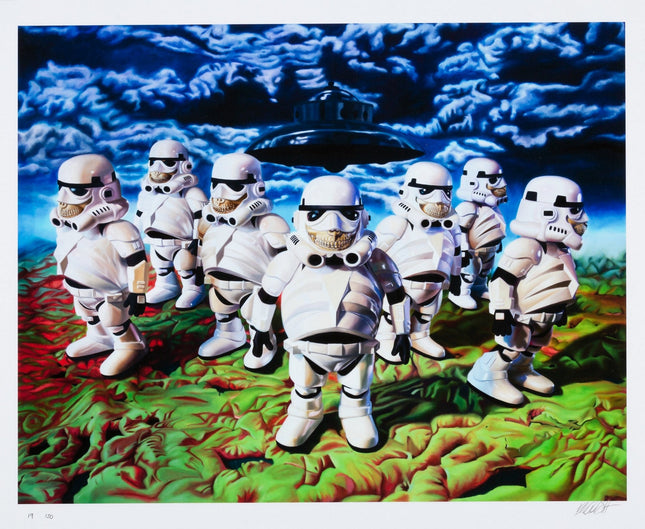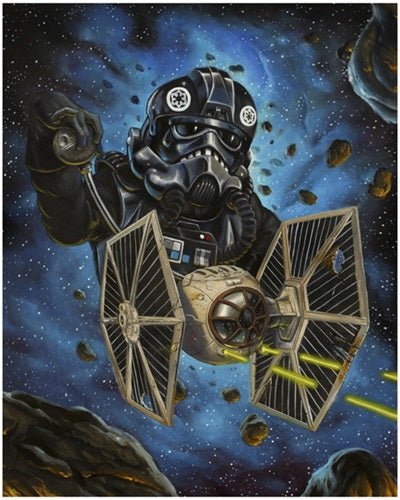
Villain

Ron English Grin Guard Archival Print by Ron English
Grin Guard Limited Edition Archival Pigment Fine Art Prints on Moab Entrada Fine Art Paper by Graffiti Street Art and Pop Culture Artist Ron English. 2021 Signed & Numbered Limited Edition of 150 Archival Pigment Print in Colors on Moab Entrada Fine Art Paper Artwork Size 24x20 "Grin Guard" stands out as a compelling exemplar of Ron English's artistic vision, where he seamlessly integrates elements of satire, pop culture, and street art. Known for his critical and humorous take on contemporary society, English's creation is a limited edition series comprising 150 signed and numbered prints, each rendered with archival pigment on Moab Entrada Fine Art Paper. This paper is renowned for its ability to present a broad spectrum of vibrant colors and preserve the fine details of the artwork, making it an ideal medium for English's detailed style. Sized at 24x20 inches, each piece in this series is a work of art and a collector's item. This print features a phalanx of stormtroopers from the iconic "Star Wars" franchise, each donning a different expression of Ron English's signature grin—a recurrent motif in his work that often symbolizes the subversive undercurrents of pop culture. Against a backdrop that evokes a surrealist landscape beneath an ominous UFO, the scene is familiar and jarringly otherworldly. This juxtaposition is emblematic of English's approach, which often places recognizable characters in unexpected contexts to critique and comment on media, consumerism, and the corporatization of American culture. Through "Grin Guard," English explores the concept of the 'trooper' not just as a faceless enforcer but as a being with an individual, if concealed, identity. The grinning skulls emblazoned on their helmets suggest a macabre sense of mortality and individuality within the conformity of their ranks. This piece is a powerful commentary on identity and anonymity, particularly within mass media and entertainment, where characters often become mere extensions of their fictional universes rather than being perceived as reflections of human nature. Ron English's work continues to challenge viewers, using the accessible mediums of street and pop art to provoke thought and discussion. "Grin Guard" is no exception, offering not only an aesthetic that resonates with fans of these genres but also conveying a more profound message about the complex interplay between individuality and cultural iconography. Through such works, English affirms his status as an innovative artist who can blur the lines between fine art and the rebellious spirit of street art.
$415.00

Jonathan Bergeron Chasing The Falcon Giclee Print by Jonathan Bergeron
Chasing The Falcon Artwork Giclee Limited Edition Print on Fine Art Paper by Pop Culture Graffiti Artist Jonathan Bergeron. Jonathan Bergeron (aka Johnny Crap) "Chasing the Falcon" limited to only 50 copies signed and numbered 16" x 20"
$129.00



